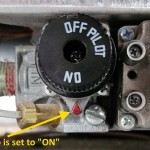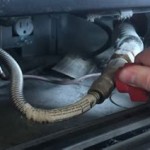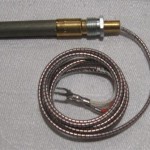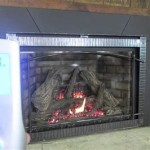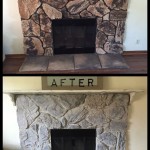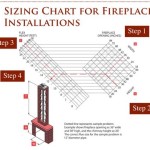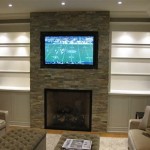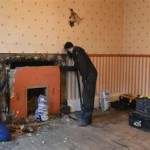Outdoor Stone Fireplace: A Comprehensive Guide to Design, Construction, and Maintenance
An outdoor stone fireplace serves as a focal point for any outdoor living space, enhancing the ambiance and providing warmth and a gathering place. Its enduring appeal lies in the natural beauty of the stone, its ability to complement various architectural styles, and the comforting atmosphere it creates. This article explores the key aspects of designing, constructing, and maintaining an outdoor stone fireplace, offering insights into the considerations necessary for a successful project.
Design Considerations for an Outdoor Stone Fireplace
The initial stage of any outdoor stone fireplace project involves meticulous planning and design. This phase establishes the aesthetic, functional, and structural parameters for the fireplace, ensuring it meets the homeowner's expectations and adheres to safety regulations.
Style and Aesthetics: The design should harmonize with the existing architectural style of the house and the overall landscape. Options range from rustic, using rough-hewn stones for a natural look, to contemporary, featuring clean lines and precisely cut stone. Consider the color and texture of the stone to ensure visual compatibility. For instance, a modern home may benefit from a fireplace crafted from sleek, rectangular limestone, while a traditional home might be better suited to a fieldstone fireplace with irregular shapes and earth tones. The goal is to create a cohesive and aesthetically pleasing element within the outdoor space.
Size and Placement: The size of the fireplace should be proportionate to the outdoor area. A fireplace that is too large can overwhelm the space, while one that is too small may lack visual impact and functional effectiveness. Consider the typical number of people who will be using the space and the desired heat output. Placement is equally crucial. Take into account wind patterns, proximity to flammable materials (such as trees or wooden structures), and accessibility. Ideally, the fireplace should be positioned to minimize smoke exposure and maximize the enjoyment of the warmth and ambiance. Consultation with a professional regarding local building codes and setback requirements is essential at this stage.
Functionality and Features: Beyond its role as a heat source, an outdoor stone fireplace can incorporate various functional features. These may include built-in seating, storage for firewood, and integrated cooking surfaces or grills. Consider the intended use of the fireplace and design accordingly. For example, if the homeowner enjoys outdoor cooking, incorporating a grilling area with a chimney flue and adequate ventilation is a worthwhile addition. Built-in seating can create a more inviting and comfortable gathering space, while firewood storage keeps fuel readily accessible and adds to the aesthetic appeal. The inclusion of lighting, such as recessed lights or sconces, can further enhance the ambiance and functionality of the fireplace area.
Materials Selection: Choosing the right type of stone is vital for both aesthetic and structural reasons. Different types of stone offer varying degrees of durability, weather resistance, and aesthetic appeal. Common choices include fieldstone, river rock, limestone, sandstone, and granite. Fieldstone and river rock offer a natural, rustic look, while limestone and sandstone provide a more refined and elegant appearance. Granite is known for its exceptional durability and weather resistance. The cost of the stone can also vary significantly, so it’s important to consider the budget when making a selection. Mortar is another critical material, as it binds the stones together. The type of mortar used should be compatible with the chosen stone and designed for outdoor use to withstand the elements. Proper drainage is also crucial to prevent water damage and ensure the longevity of the fireplace. This can be achieved through the use of a well-draining base material and the incorporation of weep holes in the structure.
Construction Process of an Outdoor Stone Fireplace
The construction of an outdoor stone fireplace is a complex process that requires careful planning, skilled craftsmanship, and adherence to safety regulations. While some experienced DIYers may undertake the project, it is generally advisable to hire a qualified mason or contractor to ensure the structural integrity and safety of the fireplace. The process typically involves the following steps:
Foundation Preparation: A solid and level foundation is essential for the structural stability of the fireplace. The foundation should extend below the frost line to prevent movement due to freezing and thawing. The type of foundation will depend on the size and weight of the fireplace, but it typically consists of a concrete slab reinforced with steel rebar. The foundation should be properly cured before construction begins to ensure its strength and durability. The dimensions of the foundation should be precisely measured to accommodate the footprint of the fireplace, taking into account any overhangs or decorative elements.
Laying the Stone: The process of laying the stone involves carefully selecting and arranging each stone to create a visually appealing and structurally sound structure. The mason will typically start with the base layer and work upwards, using mortar to bind the stones together. The mortar joints should be consistent in width and depth to create a uniform appearance. The stones should be positioned to interlock with each other, creating a strong and stable structure. The mason will use a level and plumb bob to ensure that the fireplace is straight and level. The process requires patience and attention to detail, as each stone must be carefully placed and adjusted to achieve the desired effect.
Firebox Construction: The firebox is the heart of the fireplace and must be constructed with heat-resistant materials to withstand high temperatures. Typically, firebrick is used to line the firebox, as it is designed to withstand extreme heat without cracking or deteriorating. The firebox should be properly sized to accommodate the desired size of the fire and to ensure adequate airflow. The back and side walls of the firebox should be slightly angled inwards to help reflect heat into the room. The firebox should also have a proper draft to ensure that smoke is drawn up the chimney and not into the surrounding area.
Chimney Construction: The chimney is responsible for venting smoke and combustion gases away from the fireplace and must be constructed to meet local building codes and safety regulations. The chimney typically consists of a flue liner, which is a ceramic or metal pipe that directs the smoke upwards, and a masonry surround, which provides structural support and aesthetic appeal. The flue liner should be properly sized to ensure adequate draft. The chimney should extend above the roofline to prevent downdrafts and to ensure that smoke is dispersed away from the house. A spark arrestor should be installed at the top of the chimney to prevent embers from escaping and potentially causing a fire.
Maintenance and Safety of an Outdoor Stone Fireplace
Regular maintenance is crucial for ensuring the longevity, safety, and optimal performance of an outdoor stone fireplace. Neglecting maintenance can lead to structural damage, fire hazards, and reduced efficiency. Additionally, adhering to safety guidelines is paramount to prevent accidents and injuries.
Cleaning and Inspection: The fireplace should be cleaned regularly to remove ash, soot, and creosote buildup. Creosote is a highly flammable substance that can accumulate in the chimney and firebox, posing a significant fire hazard. The frequency of cleaning will depend on how often the fireplace is used, but it is generally recommended to clean it at least once a year, or more frequently if heavy use is anticipated. A professional chimney sweep can inspect and clean the fireplace, ensuring that it is in good working order. The fireplace should also be inspected regularly for cracks, loose stones, or damaged mortar. Any necessary repairs should be made promptly to prevent further damage.
Mortar Joint Repair: Over time, mortar joints can deteriorate due to weathering, exposure to moisture, and thermal expansion and contraction. Cracks or gaps in the mortar joints can allow water to penetrate the structure, leading to further damage. It is important to repair any damaged mortar joints promptly to prevent water damage and maintain the structural integrity of the fireplace. This process, known as repointing, involves removing the old, damaged mortar and replacing it with new mortar. The new mortar should be compatible with the existing mortar and properly cured to ensure its strength and durability.
Safe Fire Practices: Following safe fire practices is essential to prevent accidents and injuries. Never leave a fire unattended and always keep a close eye on the flames. Use a fire screen or spark guard to prevent embers from escaping and potentially igniting nearby materials. Keep flammable materials, such as furniture, firewood, and dry vegetation, away from the fireplace. Use only seasoned firewood, as green or wet wood produces more smoke and less heat. Never use flammable liquids, such as gasoline or kerosene, to start or accelerate a fire. When the fire is no longer needed, extinguish it completely with water or sand. Ensure that all embers are extinguished before leaving the area. Supervise children and pets closely when a fire is burning.
Weather Protection: Protecting the fireplace from the elements can help to extend its lifespan and prevent damage. Consider using a fireplace cover during periods of inclement weather to shield the stone and mortar from rain, snow, and ice. Applying a sealant to the stone can also help to protect it from moisture and stains. Ensure that the area around the fireplace is well-drained to prevent water from pooling and potentially damaging the foundation. Consider planting trees or shrubs around the fireplace to provide shade and protection from the wind. Regular maintenance and weather protection will help to keep the outdoor stone fireplace looking its best and functioning properly for years to come.

How To Build An Outdoor Stacked Stone Fireplace

Outdoor Fireplace Kits Stonewood S Cape Cod Ma Nh Ct

Outdoor Stone Paver Firepits Fireplaces Installer Minneapolis St Paul

Outdoor Stone Fireplace Landscaping Network

Pull Up A Chair And Light The Night 15 Natural Stone Fireplaces Fire Pits

Stonetutorials Living Stone Masonry

Outdoor Fireplace Design Ideas

Natural Stacked Stone Veneer Fireplace Ideas

Outdoor Patio Fireplace Kitchen Furniture Stonewood S

Amazing Fire Pit Outdoor Fireplace Ideas Natural Brick Stone Depot
Related Posts

